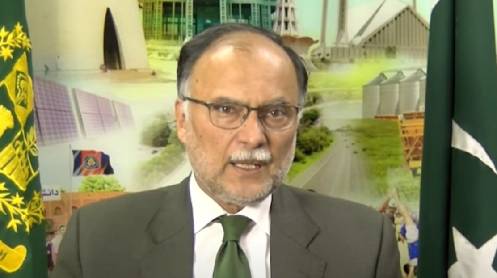ISLAMABAD: Pakistan’s unemployed population has risen sharply by 31 per cent over the past four years — climbing from 4.5 million in 2020-21 to 5.9 million in 2024-25 — underscoring the growing stress on the country’s labour market. The data, released by Minister for Planning and Development Ahsan Iqbal, reveals that unemployment has increased across all age groups, regions, and genders.
Youth joblessness saw a notable jump: the unemployment rate for individuals aged 15–24 increased from 11.1pc to 12.6pc, while the 15–29 bracket rose from 10.3pc to 11.5pc. Overall, the national unemployment rate edged up from 6.3pc to 6.9pc.
Gender-wise, unemployment among men rose from 5.5pc to 5.9pc, while female unemployment saw a steeper increase from 8.9pc to 9.7pc. Rural unemployment climbed from 5.8pc to 6.3pc, and urban joblessness rose from 7.3pc to 8pc.
The Labour Force Survey (LFS) 2024-25, conducted electronically by the Pakistan Bureau of Statistics (PBS), also shows a rising Labour Force Participation Rate — from 44.9pc to 47.7pc — indicating that more people are entering the job market. Participation increased for both men (67.9pc to 69.8pc) and women (21.4pc to 24.4pc), with rural areas seeing a bigger rise than urban centres.
Pakistan’s labour force expanded from 71.8m to 85.6m over the four-year period, adding 3.5m people annually.
For the first time, the survey assessed gig economy participation. It found that 2.9pc of workers rely on gig work in their primary jobs, while 10.6pc use gig work in secondary roles — including 15pc of women, compared to 9.8pc of men.
Employment patterns continued to shift: the share of agricultural jobs fell from 37.4pc to 33.1pc, while services expanded significantly from 37.2pc to 41.2pc. Industry dipped slightly to 24.9pc.
Average monthly wages improved from Rs24,000 to Rs39,000, and the gender wage gap narrowed from Rs4,500 to under Rs2,000. Female entrepreneurship also saw a sharp rise, jumping from 19pc to 25.2pc, while unpaid family work — mostly performed by women — decreased.
In 2024-25, out of 179.6m working-age individuals, 117.4m remain engaged in unpaid domestic and care work. Among women, 76pc are still performing unpaid activities, compared to 55pc of men.
The employment structure shows that employees form the largest segment at 43.5pc, followed by own-account workers at 36.1pc. In the non-agricultural sector, informal work continues to dominate, accounting for 72.1pc of jobs — more prevalent in rural than urban areas.
Formal sector participation is higher among women (33.7pc), while 73pc of men work informally. Though modest, the formal sector has expanded slightly since the previous survey.
Story by Mubarak Zeb Khan








